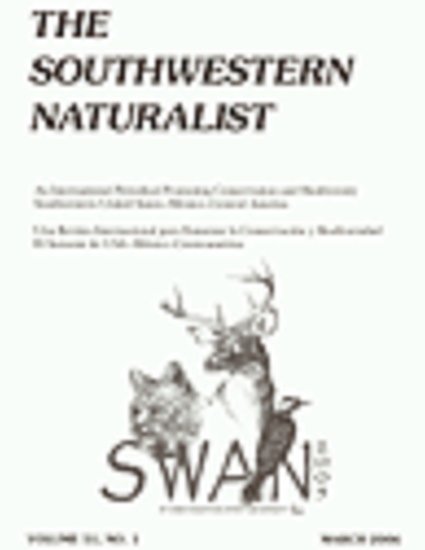
Article
Establishment of Helianthus maximiliani (Asteraceae) in Abandoned Cropland in the Post Oak Savannah of Texas
The Southwestern Naturalist
(1986)
Abstract
A revegetation study was conducted on a 20-year-old abandoned cropland site in the Post Oak Savannah region of Texas to evaluate the establishment of Helianthus maximiliani Schrad. (Maximilian sunflower) in a dense cover of vegetation by drill seeding, and rhizome and whole crown plantings. Percent establishment, canopy cover, plant height, total aboveground biomass, and number of shoots per plant were monitored for two growing seasons. A small number of seedlings emerged following seeding, but failed to establish in the resident vegetation. High levels of total nonstructural carbohydrate reserves in rhizomes and whole crowns enhanced early root and canopy development, which allowed vegetative establishment. Plant establishment and growth from rhizome sections was greatest when large rhizomes were collected in late winter/early spring and planted at a four cm depth. When compared to rhizomes, whole crowns exhibited earlier and higher establishment, and developed into plants with greater basal shoot densities, aboveground biomass, and canopy cover.
Disciplines
Publication Date
September, 1986
DOI
DOI: 10.2307/3671841
Citation Information
Christopher A. Call. "Establishment of Helianthus maximiliani (Asteraceae) in Abandoned Cropland in the Post Oak Savannah of Texas" The Southwestern Naturalist Vol. 31 Iss. 3 (1986) p. 367 - 374 Available at: http://works.bepress.com/christopher_call/38/
